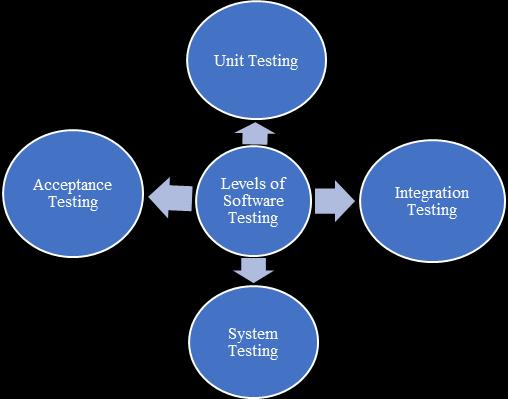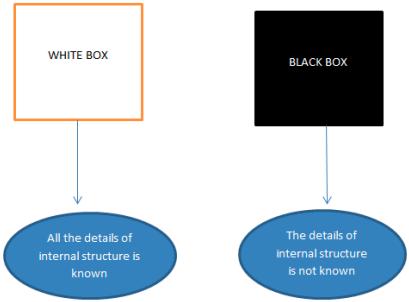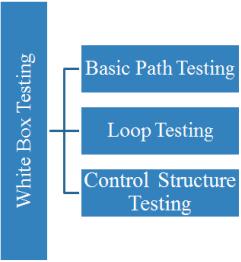
International Research Journal of Engineering and Technology (IRJET) e-ISSN: 2395-0056
Volume: 11 Issue: 09 | Sep 2024 www.irjet.net p-ISSN: 2395-0072


International Research Journal of Engineering and Technology (IRJET) e-ISSN: 2395-0056
Volume: 11 Issue: 09 | Sep 2024 www.irjet.net p-ISSN: 2395-0072
Kishan Patel1
1Independent Researcher, kpatelscholarnetwork@gmail.com
Abstract - The goal of software testing is to ensure that the final product is free of bugs and meets quality standards. Software testing is a series of steps used to identify and fix bugs in software before releasing it to the public. It provides metrics for evaluating the software's efficacy and accuracy. TheroleofSQATinsoftwaredevelopmentwillalsobestudied in this paper with focus on understanding why it is an important aspect in producing quality software products. It suggeststhemeansofworkonthebasisofpropertiesofSQAT such as the process-oriented approach in Software Quality Assurance (SQA) and the product-oriented approach in SoftwareTesting(ST).Adiscussionofinnovativeprocesseslike Agile,DevOps,andautomationoftestingismade,withafocus on the changes made to enhance software quality. There are alsoexistingtrendscurrentlywitnessedinthemarketsuchas shift-left testing, risk-based testing, and AI, ML, and cloud solutions, as well as future trends such as TestOps, improved securitytesting,andincreasedUXtesting.Ittherebyhighlights why SQAT is requisite in avoiding failure of software, improving customer’s satisfaction, and embracing the standard requirements in whatever form even though there are challenges and costs involved in its execution.
Key Words: Software Testing, Software Quality Assurance Testing, Future Trends, Current Practices, Levels of Software Testing, Software Quality Assurance
SQA encompasses a wide range of activities related to softwareproductstandards,processes,andprocedures;itis amethodicalapproachtoassessingsoftwarequality[1][2]. Numerous aspects of our everyday lives are affected by software quality, including economics, health, safety, and security.SQAiscrucialtothesoftwaredevelopmentprocess. However,amongSQA'smanycomponents,softwaretesting (ST) stands head and shoulders above the others [3][4]. Executingsoftwareandwatchingitsbehaviouroroutputsis the fundamental premise behind this product-oriented activity. To ensure the final product meets all quality requirements, ST is an essential part of the software development life cycle (SDLC). To guarantee that the softwareprogrammeetstheclient'srequirements,quality assurance techniques and software testing work hand in hand [5][6][7]. The software development process isn't complete without SQAT, despite the fact that it's an expensivebutcrucialjob.Economicharmandcatastrophic
outcomes could result from inadequate or non-existent SQAT efforts [8][9][10]. Table 1 provides the software QualityAssuranceVStestingcomparison.
key phase Quality Assurance Testing
Purpose Establishquality standardstoprevent difficulties.
Detectandfixquality issues.
Focus Developmentprocesses Variousfacetsofthe product,includingits integration, performance,and usefulness.
Who Everyonefromsoftware engineersandQA specialiststobusiness strategistsandexternal stakeholders
When Duringeachstageofa product'sdevelopment
Doing what Developmentprocess improvement, standardization,and guidelinecreation
QAengineer, softwaredevelopers
Atanypoint throughoutthe development process,evenduring testing
Reviewingcode, runningtest, addressingdefects
Development of software requires the use of Software Quality Assurance and Testing (SQAT). A program might have disastrous results if SQAT operations are not performed. Completing SQAT tasks is not without its difficulties,however.Itincludesbothprocess-orientedand product-oriented methods. Software Quality Assurance (SQA)checksthatthedevelopmentprocessesarebetterand moreconsistent,whileSoftwareTestingmakessurethatthe finished product works the way it should. Checking and validating software, finding and preventing bugs, and making quality processes better all the time are the main goalsofSQAT[11][12]. Toreachthesegoals,methodslike human testing, automated testing, and static and dynamic analysisareused. Modern methodslikeAgileand DevOps havealsobeenincorporatedintoSQAT.Strategieslikeshiftlefttesting,continuoustesting,andDevSecOpsarenowused to make sure quality is kept throughout the development lifecycle.ItisimportanttohaveSQATbecauseitlowersthe chanceofsoftwarefailures,improvescustomersatisfaction,

International Research Journal of Engineering and Technology (IRJET) e-ISSN: 2395-0056
Volume: 11 Issue: 09 | Sep 2024 www.irjet.net p-ISSN: 2395-0072
andmakessurethatindustrystandardsaremet.Allofthese things help make sure that reliable, high-quality software productsaredelivered.
Amaingoalofthispaperistogiveaproperoverviewof Software Testing and Quality Assurance with its current practicesandfuturetrends.Thecontributionofthispaperis givenbelow:
This paper explains the fundamental distinction between Software Quality Assurance (SQA) and SoftwareTesting(ST),clarifyingtheirrespectiveroles inenhancingsoftwarequalityandensuringeffective validation.
This paper outlines the key elements of SQA, includingstandards,reviews,erroranalysis,change management, and security, providing a comprehensive framework for maintaining highquality software throughout the development lifecycle.
This paper highlightscurrent practices in Software QualityAssuranceandTesting(SQAT),suchasshiftleft testing, automation, and integration with Agile and DevOps, showcasing modern approaches to improvingsoftwarequalityandefficiency.
Thispaperidentifiesboththebenefitsandchallenges ofSQAT,offeringinsightsintohowitcontributesto high-quality software while addressing the costs, time, and complexity involved in implementing effectivequalityassuranceandtestingpractices.
The following paper organised as: Section II provides elementsofsoftwarequalityassurance,withitsbenefitsand disadvantages.SectionsIIIandIVprovidesoftwaretesting anditsdifferentmethods.SectionsV,VI,andVIIprovidethe software quality assurance and testing (SQAT) with its current practices and future trends. In section VIII some previousresearchers’studyisexplainedthroughliterature reviewandinlastsectionIXconclusionisgivenofthispaper
SQAreferstotheprocessofmakingsuresoftwareisgood. The project-specific and properly executed standards, procedures, and processes are ensured by this set of measures[13][14].SoftwareQAisanactivitythatoccursin the background while software is being developed. To preventminorproblemsfromescalatingintomajorones,it aimstostreamlinethesoftwaredevelopmentprocess.
Here are some elements of software quality assurance thatwereexplainedbelowshowninFigure1[15]:
Standards: Publicationsandstandardsdevelopedby organisations like the IEEE and ISO cover a broad spectrumofsoftwareengineering.TheQAteam'sjob istocheck thateveryoneisfollowingtherulesand thatthefinalgoodsareuptopar.
Reviews and audits: One way that software engineersensurethequalityoftheircolleagues'work is by conducting technical reviews. As a kind of review, SQA experts (those working for an organisation) do audits to ensure that software engineering work is meeting quality requirements[16].
Testing: Error detection is the main objective of software testing, a quality control procedure. Assurance of appropriate planning and effective executionoftestingforthemainsoftwareobjectiveis theresponsibilityofSQA.
Error/defect collection and analysis: Throughthe collectionandanalysisoferroranddefectdata,SQA gainsabetterunderstandingofthecausesoferrors and the software engineering activities that contributemosttotheirremoval.
Change management: SQA checks to see whether the right protocols have been put in place for handlingchanges.
Education: A common objective throughout all software firms is to improve software engineering procedures. Education has a significant positive impactonthemanagementofsoftwareengineersand otherstakeholders.
Security management:SQAmakesensuringthatthe righttoolsareutilisedtomakesoftwaresecure[17]
Safety: It is possible that SQA is responsible for identifyingtherepercussionsofsoftwarefailureand launchingthenecessarypreventativemeasures.
Risk management: TheSQAorganisationoversees thecreationofbackupplansconnectedtorisksand the proper implementation of risk management protocols.

International Research Journal of Engineering and Technology (IRJET) e-ISSN: 2395-0056
Volume: 11 Issue: 09 | Sep 2024 www.irjet.net p-ISSN: 2395-0072
SomebenefitsofSQAare:
SQA ensures that only excellent software is developed.
Betterappssavetimeandmoney.
SQAcontributestoenhancingreliability.
SQAisbeneficialifthereareprolongedperiodsofno maintenance.
A company's market share grows when its commercialsoftwareisofsuperiorquality.
Improvingtheprocedureforcreatingsoftware.
Increasetheoverallqualityoftheprogram.
Itlowersmaintenanceexpenses.Shouldthelaunchgo offwithoutahitchfromthebeginning,yourcompany maygoontothenextbigthingandleavethisbehind. Acostly,time-consuming,andnever-endingcycleof repairs is thrust upon your business with the launchingofaproductthathasongoingissues.
Some disadvantages of software quality assurance are givenbelow:
Cost: Incorporating additional resources, which resultsinalargerbudget,andenhancingtheproduct with the addition of additional resources are two examples.
Time Consuming: The project is running behind schedulebecausetestinganddeploymentaretaking longerthanexpected.
Overhead: Due to the need for documenting, reporting,andmonitoringofqualitymeasures,SQA processes can add administrative expenses[18]. Particularly for less substantial endeavours, the advantages could fail to outweigh the extra procedure.
Resource Intensive: SQA necessitates personnel who are proficient in quality assurance practices, tools,andtestingmethodologies.
Resistance to Change: ImplementingSQAmethods mayfaceresistancefromsometeammembers[19], seeingthemassuperfluousorbureaucratic.
Not Foolproof: In spite of extensive testing and quality assurance procedures, software may still includebugsorsecurityholes.
Complexity: As the number of stakeholders, dependencies,andinteractionpointsincreasesina large-scaleproject,theSQAprocessmightgetmore complicated.
Theterm"softwaretesting"describesthestepsusedtoruna systemorprograminsearchofbugs.Likeanyotherphysical process,softwaretakesindataandproducessomethingnew inresponse.Softwarevariesinthewaythatitmalfunctions.
The majority of physical systems malfunction in a limited numberofpredictableways [13].Butsoftwaremaybreak downinall sortsofstrangeways.Itisoftenimpossible to identifyeverypotentialsoftwarefailuremechanism.Because softwareiscomplicated,itmightbedifficulttofinddesign flawsintheprogram.Softwareordigitalsystemcorrectness cannotbeensuredbycheckingboundaryvaluesalonesince theyarenotcontinuous[20]
Although every potential value must be examined and confirmed, it is not practical to test them all. Even if tests were run at thousands/second, it would take hundreds of yearstothoroughlytestasimpleprogramthataddsonly2 integer inputs of 32 bits (resulting in 2^64 different test scenarios).Thesoftwaretestingiterativeapproachincludes: Designingtests Executingtests
Identifyingproblems.
Gettingproblemsfixed.
The4phasesofsoftwaretestingareshowninFigure2: acceptance,system,integration,andunittesting[21].

3.1.1 Unit Testing/Component Testing/Module Testing
Unittestingiscarriedoutondifferentsystemcomponents separately.Additionally,thisisutilisedtovalidatewhetheror not each component is operating in accordance with user needs. Three methods are used to complete this test: unit testing,whichiscarriedoutbytheprogramdevelopers,black boxtesting,andwhiteboxtesting.
3.1.2
Integrationtestinginvolvesexamininghowdifferentparts of the system interact with one another as well as the

International Research Journal of Engineering and Technology (IRJET) e-ISSN: 2395-0056
Volume: 11 Issue: 09 | Sep 2024 www.irjet.net p-ISSN: 2395-0072
componentsandinterfaces.Thedeveloperalsoperformsthis test.Threestrategieswillbeusedinthisaswell:integration testing,bottom-up,andtop-downtechniques[22].
TheroleoftheTesteristoensurethattheprogramisfully functional by doing thorough tests. There are two main categoriesoftestinginsystemtesting:functionalandnonfunctional. The primary focuses of this testing are the system'ssecurity,usability,andexternalinterfaces,aswellas itsperformance.
Softwaretestingculminatesinacceptancetesting,which occurs after system testing but before the system is made availabletoendusers.
There are two ways in which software testing may be carriedoutafterdevelopment:

3.2.1
Figure3displaystheresultsofthistesting,whichisalso calledstructuraltesting.Bythispointinthetestingprocess, theprogram'sinternalstructureandallofitscodingdetails are understood, and the majority of faults will have been caughtbeforethesystemencountersanyproblems.Inthis context, "debugging" refers only to the process of locating softwareorproductdefects.Thereisanelementofsecurity testinginthisaswell.

3.2.2
Figure4depictsthiskindoftesting,whichisalsocalled functionaltesting.Thiskindoftestingconcealsallfactsfrom thetester,includingthesoftware'sorproduct'sfundamental structureanddesign.In higher-level testing processeslike AcceptanceandSystemtesting,softwaretestersoftendothis kindoftesting.Additionally,understandingofprogramming and implementation is not strictly necessary for this examination.
Some current practices of the SQA and testing are given below:
Shift-Left Testing: Itisthemostsignificanttrendsin current software testing approach. It involves integrating testing activities early in the software development lifecycle, often alongside the development process. Important parts of this approach include automated testing, TDD, and Continuous Integration (CI), which assist bring testers and developers closer together and find softwareproblemsfaster[23].
Automation in Testing: Itbecomeacornerstoneof modern software testing practices. The use of automatedtoolstoexecutetests,compareoutcomes, andidentifydefectshastransformedhowsoftwareis tested.ToolssuchasSelenium,JUnit,andJenkinsare widely used for functional, regression, and performancetesting.Thebenefitsofautomationare substantial itincreasestestcoverage,speedsupthe testing process, and allows repetitive tests to be executedwithouthumanintervention[19].
Agile and DevOps Integration: The integration of Agile and DevOps methodologies with ST and QA practices is another crucial development. QAis an

International Research Journal of Engineering and Technology (IRJET) e-ISSN: 2395-0056
Volume: 11 Issue: 09 | Sep 2024 www.irjet.net p-ISSN: 2395-0072
inherentaspectofsoftwaredevelopmentinAgileand DevOpssettings,ratherthanadistinctphase.Testers work alongside developers in sprints, and DevOps practices ensure that the software is always in a deployablestate.
Risk-Based Testing: Itisastrategythattargetsthe specificareaofthesoftwarethatwouldlikelytocause aproblemordevelopfaultduringtesting.Thus,based ontheseareas,onecanallocateresourcesina way thatgivesalowprobabilityofcriticaldefectsmaking ittotheproductionphase.
Inthissectionthefuturetrendsaregivenbelowofsoftware qualityassuranceandtesting:
AI and ML in Testing: Itissettotransformthesaid fieldwhenintegratedwithArtificialIntelligenceand ML.AIandML areideal topredictareasthatcould potentiallyfailaswellascomeupwithtestcasesand evencarryoutcomplextesting.ApplyingofAIandML to testing is a transition to more intelligent and flexibletestingprocessesinregardstoincreasingly complexsoftwaresystems.
TestOps: Anotheroneistheso-calledapplicationof the DevOps principles with a focus on the testing phase. Testing TestOps is the process of building pipelines for testing to ensure that testing is continuous,integrated,andautomated.TestOpswill remainavitalcomponentasorganisationsembrace DevOpsstrategiesbecausetherateofdevelopment willinflatewhilethequalityofthesoftwaremustrise totheoccasion.
Cloud-Based Testing: Itisalsodevelopingintothe future trend. In this way, organisations can scale testing activities, obtain different testing tools and environments and save infrastructure expenses if they use cloud environments. Cross platform and cross configuration testing is possible with cloud basedtestingresultinginmuchmorecomprehensive scenarios.
Security Testing Integration: Security testing is emerging more as a core component of Quality Assurance and mainly driven by the emergence of DevSecOps. Focusing on security, it is essential to guaranteethatsoftwarewillbeprotectedduringthe entiredevelopmentprocess.Implementingsecurity testing within the QA helps in minimising risks, enhancing the software’s robustness and guaranteeingthatsecurityisputintoconsiderationat theinitialdesignstagesratherthanbeinganadd-on.
Increased Focus on user Experience (UX): The integration of UX testing into the QA practices promotes both the proper functionality of the softwareanditsUX.Thistrendwaslaunchedbased on the understanding that with the customers’ satisfaction, software products are very likely to performverywell.Inthiswayorganisationsderive
better customer satisfaction, less churn rates, and enhancedsoftwarethatusersfinduseful.
A combination of Software Testing and QA means the cooperationoftheprocessatdifferentphasesoftheSDLCto incorporate quality into the product under development instead of examining it at the final stage. Key areas of collaborationinclude:
Test-Driven Development (TDD): The early inclusion of testing throughmeasures such as TDD thatentailswritingtestsbeforetheactualcode.This helps in making sure that quality is a key considerationrightfromthetimewhentheprojectis beingauthored.
Automated Testing and Continuous Integration (CI): Itis,therefore,certainthatthroughintegration with continuous integration practices, automated testingshallensureallthemodifiedcodesconformto set standards. This enables fast feedback to developersandalsohelpstoavoidintroducingbugs.
Quality Metrics and Reporting: QA teams set up objectivesandmeasurableindicatorscalledKPIsthat facilitate tests. These can be defect density, code coverageandmeantimetofailureamongothers.
Risk Management: The primary methods of early risk assessment and control are created by the QA andtestinggroups.Riskassessmentplaysapivotal rolefortestprioritisationwhichinturntargetsonthe areasmostlikelytoaffectthequalityofthesoftware.
User Acceptance and Usability Testing: QAmakes certain that the interfaces and/or features that the users would expect or like are indeed there while testingteamsperformallthenecessarytestsinorder toconfirmthesequalities.
Feedback Loops and Continuous Improvement: QA procedures involve the collection of data on testingresultsandusingitforchangingdevelopment procedures, testing approaches, and quality requirements.Thisfeedbackprocessisongoing,and thuspromotesaconstantlyevolvingculture.
Enhanced Product Quality: Ensuring that the QA andtestingareincorporatedintotheprojectmeans thatqualityisbroughtintotheprocessateverystage thereby arriving at a better final product free of defects.
Reduced Time to Market: Detectionofdefectsatan early stage and constant testing mean that the problemsareresolvedmuchquicker,thusminimising thetimetakeninthelastphasesoftesting.
Cost Efficiency: Minimising defects in the early stages of the SDLC is done by implementing QA

International Research Journal of Engineering and Technology (IRJET) e-ISSN: 2395-0056
Volume: 11 Issue: 09 | Sep 2024 www.irjet.net p-ISSN: 2395-0072
measures, hence avoiding repeated work and bug fixinginthelaterphases.
Customer Satisfaction: Delivering a high-quality productthatmeetsuserexpectationsensureshigher customersatisfactionandloyalty.
This collaborative approach ensures that quality is not just the responsibility of a single team but is a shared objective across the entire development and delivery process.
InthissectionsomepreviousstudyonSQATisgivenbelow: Deshpandeetal.,(2023)studiedthatthequalityofsoftware isaprecisecharacteristicthatidentifiesthecharacteristics that every software should have. Quality is the primary determinantofthesuccessorfailureofasoftwareproject andasoftware-relatedcompany.Softwarequalityhasbeen the subject of several studies. To produce high-quality software, organisations involved in the software industry adheretorequirementssetoutbyCapabilityMaturityModel Integration.Therefore,inthisresearch,we'lltalkaboutthe conceptsandqualitystandardsthatareappliedtosoftware projectsintheBangaloresoftwareindustry,aswellashow thesestandardsaremonitoredandmaintained[24].
Salahat et al., (2023) the quality assurance process guaranteesthattheprojectisexecutedinaccordancewith the agreed-upon guidelines, concepts, and objectives. A deeper understanding of the complex software analysis process is still the aim of type and calibration research. Techniquesforanalysis,userhubris,andlogisticalculture are only a few examples of the problems with current softwarepractices[25]
Gao,LuoandXie,(2022)asaknowledge-intensivetask,STis anessentialpartofensuringsoftwarequality.Notmuchhas been done with the testing institution's mountain of historical test data, which includes a wealth of domain
Deshpande EtAl. SurveyofcompaniesinBangalore adheringtoCMMIguidelines
SalahatEt Al.,2023
Gao,Luo, AndXie
Analysisofqualitymanagement practicesandproposalofsolutions totestingproblems
Aknowledgebasesystembuilton ontologiesforthepurposeoftesting militaryapplicationsutilising semanticwebtechnologies
LuEtAl. Constructionofaqualityevaluation modelforsafety-criticalsoftware usingAnalyticHierarchyProcess andfuzzycomprehensiveevaluation
Zhao,Hu, AndGong
Analysisofinternational standardisationinsoftwarequality
knowledge and test expertise, to address these issues. Supporting engineering techniques in military software testingandenhancingorganisationalknowledgeacquisition andsharingaretwoofthemaingoalsoftheirinvestigation of software testing ontologies and knowledge base systems[26]
Luetal.,(2022)Softwaretestingisacrucialtoolforensuring thequalityofsoftwarethatisvitalforsafety.Thestandardof softwaretestinghasadirectimpactonthesoftwarethatis vital for safety. Building and using a testing quality assessment model is the primary approach to evaluating softwaretestingquality.Thispaperproposesamethodology forevaluatingthequalityofsafety-criticalsoftwaretesting thattakesintoaccountfourfactors:effectiveness,adequacy, stability,andcompliance.Somemeasureaspectsarepresent ineveryfacet[27].
Zhao, Hu and Gong, (2021) findings indicate that the software sector is playing a significant role in the advancement of the world economy and is a driving force behindthecurrentwaveoftechnicalinnovations.Software quality is critical for the software industry's steady expansion, and testing is a certain technique to ensure software meets all of that standard. Developers, testers, independentevaluators,andqualityassurance/controlstaff mayallbenefitfromthisasitclarifiesandimplementsthe applicablecriteriaforsoftwaretestingandquality[28]
Nakahara, Monden and Yucel, (2021) the SDLC includes softwarequalityassurance(SQA)proceduresthatrepeatedlytest andvalidatesoftwareproductstoguaranteetheirquality.Inorder toobjectivelyshowthebeneficialimpactofadditionalQAwork, particularly in the early stages of software development, they suggest a simulation model of SQA. By simulating several QA tactics in a specific software development setting, the model helps to determine which strategies are most effective in improving software quality while reducing the amount of time andeffortspentonQAandbugresolving.ThefollowingTable2 provide the summary of the related work[29]
Softwarecompanies inBangalore
Casestudiesof softwareprojects
Historicaltestdata frommilitary software
Practicalsafetycriticalsoftware projects
Globalsoftware industrystandards
Specificdetailsonthemethodsofevaluationand quantitativeresultscouldbeexpanded.Futurework couldincludeabroadergeographicalscope.
Thepaperfocusesontheoreticalsolutionswithout extensiveempiricalvalidation.Futureworkcould involveimplementingandtestingthesesolutions.
Theapproachisdomain-specifictomilitarysoftware. Futureworkcouldexploreadaptationtocivilian softwareindustries.
Themodel'sapplicabilitybeyondsafety-critical softwareisnotexplored.Futureworkcouldinclude validationindiversesoftwaredomains.
Thestudyisbroadandmaylackdepthinspecific standardisationissues.Futureworkcouldinvolvemore

International Research Journal of Engineering and Technology (IRJET) e-ISSN: 2395-0056
Volume: 11 Issue: 09 | Sep 2024 www.irjet.net p-ISSN: 2395-0072
andtesting detailedcasestudiesorindustry-specificstandards. Nakahara, Monden, AndYucel
Simulationmodelofsoftware qualityassurancetodemonstrate theimpactofQAeffortduring developmentphases
Simulatedsoftware development projects
Softwaretesting’sultimategoalisenhancingthequalityof thedevelopedsoftware.Theprimaryobjectiveoftestingis to identify issues such as errors, defects, and issues in a systemornewlydevelopedsoftware.Itisalsoclearfromthe above discussions that testing has an important place in software quality control (SQC). This examines the importanceofSQATinsoftwaredevelopmentemphasising its importance in enhancing the reliability of software products. It defines the major aspects of SQAT such as processfocusinSQAandproductemphasisinST.Various Agile, DevOps, and automation in testing practices are defined,andtheirsignificanceinenhancingtheavailability ofqualitysoftwareismentioned.Themoderntrendssuchas shift-left testing, risk-based testing, AI, ML, cloud-based solutions, and Test Ops that are on the horizon, security testing and UX Testing are also discussed. The paper thus concludesthatSQATisnecessarytoavoidsoftwarefailures, increase customer satisfaction, and meet regulatory requirementseventhoughitcomeswithdifficultiesandhigh costs.Wewanttoexpandthedesignpattern'sprimaryuse caseinthe future byinvestigatingitspotential useinunit testingandsimilarcontexts.Furthermore,wewouldwantto track certain metrics among a group of test automation experts in order to demonstrate the effectiveness of a framework using this design pattern. This can only be accomplishedbygivingcarefulthoughttothemostcrucial details,suchtheamountoftimespentonmaintenance,the reusabilityofmethods,andtheamountoftimerequiredto executeatestcase.
[1] A.Bhanushali,“EnsuringSoftwareQualityThrough Effective QualityAssurance Testing:Best Practices andCaseStudies,” Int. J. Adv. Sci. Res. Eng.,2023.
[2] A. Bhanushali, “Challenges and Solutions in Implementing Continuous Integration and ContinuousTestingforAgileQualityAssurance,” Int. J. Sci. Res.,2023,doi:10.21275/sr231021114758.
[3] S.Najihi,S.Elhadi,R.A.Abdelouahid,andA.Marzak, “Software Testing from an Agile and Traditional view,” in Procedia Computer Science, 2022. doi: 10.1016/j.procs.2022.07.116.
[4] T. K. Abdel-Hamid, “The economics of software quality assurance: A simulation-based case study,” MISQ.Manag.Inf.Syst.,1988,doi:10.2307/249206.
Themodelisbasedonsimulationsratherthanrealworlddata.Futureworkcouldvalidatethemodelwith actualdevelopmentprojects.
[5] J.MožuchaandB.Rossi,“Ismutationtestingreadyto be adopted industry-wide?,” in Lecture Notes in Computer Science (including subseries Lecture Notes in Artificial Intelligence and Lecture Notes in Bioinformatics), 2016. doi: 10.1007/978-3-31949094-6_14.
[6] B.Rossi,B.Russo,andG.Succi,“Modellingfailures occurrencesofOpenSourceSoftwarewithReliability Growth,” in IFIP Advances in Information and CommunicationTechnology,2010.doi:10.1007/9783-642-13244-5_21.
[7] S.Mann,A.Balyan,V.Rohilla,D.Gupta,Z.Gupta,and A. W. Rahmani, “Artificial Intelligence-based BlockchainTechnologyforSkinCancerInvestigation Complemented with Dietary Assessment and RecommendationusingCorrelationAnalysisinElder Individuals,” Journal of Food Quality. 2022. doi: 10.1155/2022/3958596.
[8] S.M.,M.Shamsur,A.Z.,andM.Hasibul,“ASurveyof Software Quality Assurance and Testing Practices andChallengesinBangladesh,” Int. J. Comput. Appl., vol. 180, no. 39, pp. 1–8, 2018, doi: 10.5120/ijca2018917063.
[9] V. Rohilla, D. S. Chakraborty, and D. R. Kumar, “RandomForestwithHarmonySearchOptimization forLocationBasedAdvertising,” Int.J.Innov.Technol. Explor. Eng., vol. 8, no. 9, pp. 1–6, 2019, doi: 10.35940/ijitee.i7761.078919.
[10] V.Rohilla,M.S.S.Kumar,S.Chakraborty,andM.S. Singh,“DataClusteringusingBisectingK-Means,”in Proceedings - 2019 International Conference on Computing, Communication, and Intelligent Systems, ICCCIS 2019, 2019. doi: 10.1109/ICCCIS48478.2019.8974537.
[11] A. Rath, A. Das Gupta, V. Rohilla, A. Balyan, and S. Mann,“IntelligentSmartWasteManagementUsing Regression Analysis: An Empirical Study,” in Communications in Computer and Information Science,2022.doi:10.1007/978-3-031-07012-9_12.
[12] K. Patel, “Quality Assurance In The Age Of Data Analytics:InnovationsAndChallenges,” Int. J. Creat. Res. Thoughts,vol.9,no.12,pp.f573–f578,2021.
[13] V.Rohilla,S.Chakraborty,andM.Kaur,“AnEmpirical Framework for Recommendation-based Location

International Research Journal of Engineering and Technology (IRJET) e-ISSN: 2395-0056
Volume: 11 Issue: 09 | Sep 2024 www.irjet.net p-ISSN: 2395-0072
Services Using Deep Learning,” Eng. Technol. Appl. Sci. Res.,2022,doi:10.48084/etasr.5126.
[14] RiteshTandon,AniqaSayed,andMuhammadAnas Hashmi,“Facemaskdetectionmodelbasedondeep CNNtechniqueusingAWS,” Ijera,vol.13,no.5,pp. 12–19,2023,doi:10.9790/9622-13051219.
[15] M. S. Hossain, “Challenges of Software Quality Assurance and Testing,” Int. J. Softw. Eng. Comput. Syst., vol. 4, no. 1, pp. 133–144, 2018, doi: 10.15282/ijsecs.4.1.2018.11.0044.
[16] V. Rohilla, S. Chakraborty, and R. Kumar, “Deep learningbasedfeatureextractionandabidirectional hybrid optimized model for location based advertising,” Multimed. Tools Appl., 2022, doi: 10.1007/s11042-022-12457-3.
[17] S.MathurandS.Gupta,“ClassificationandDetection of Automated Facial Mask to COVID-19 based on Deep CNN Model,” in 2023 IEEE 7th Conference on Information and Communication Technology, CICT 2023, 2023. doi: 10.1109/CICT59886.2023.10455699.
[18] J.Thomas,“TheEffectandChallengesoftheInternet of Things (IoT) on the Management of Supply Chains,” Int. J. Res. Anal. Rev.,vol.8,no.3,pp.874–878,2021.
[19] J. Thomas, “Enhancing Supply Chain Resilience Through Cloud-Based SCM and Advanced Machine Learning: A Case Study of Logistics,” J. Emerg. Technol. Innov. Res.,vol.8,no.9,2021.
[20] M. Tuteja and G. Dubey, “A Research Study on importance of Testing and Quality Assurance in Software Development Life Cycle (SDLC) Models,” Int. J. Soft Comput. Eng.,no.2,pp.2231–2307,2012.
[21] M.A.Jamil,M.Arif,N.S.A.Abubakar,andA.Ahmad, “Softwaretestingtechniques:Aliteraturereview,”in Proceedings - 6th International Conference on Information and Communication Technology for the Muslim World, ICT4M 2016, 2017. doi: 10.1109/ICT4M.2016.40.
[22] R.DwivediandV.Rohilla,“Empoweringagilemethod feature-drivendevelopmentbyextendingitinRUP shell,” in Advances in Intelligent Systems and Computing, 2017. doi: 10.1007/978-981-10-37702_69.
[23] S.MathurandS.Gupta,“AnEnergy-EfficientClusterBased Routing Protocol Techniques for Extending the Lifetime of Wireless Sensor Network,” in 2023 International Conference on the Confluence of Advancements in Robotics, Vision and
InterdisciplinaryTechnologyManagement,IC-RVITM 2023, 2023. doi: 10.1109/ICRVITM60032.2023.10434975.
[24] M.V.Deshpande,P.A.Soitkar,D.R.Tripathi,andS.B. Agarmore,“EnsuringWebApplicationQuality:The Role of Software Testing as a Form of Quality Assurance,”in 2023IEEEInternationalConferenceon ICT in Business Industry & Government (ICTBIG), 2023, pp. 1–6. doi: 10.1109/ICTBIG59752.2023.10456277.
[25] M. Salahat et al., “Software Testing Issues Improvement in Quality Assurance,” in 2nd International Conference on Business Analytics for Technology and Security, ICBATS 2023, 2023. doi: 10.1109/ICBATS57792.2023.10111145.
[26] C. Gao, W. Luo, and F. Xie, “An Ontology-based Knowledge Base System for Military Software Testing,” in Proceedings - 2022 9th International Conference on Dependable Systems and Their Applications, DSA 2022, 2022. doi: 10.1109/DSA56465.2022.00043.
[27] Y. Lu, C. Li, S. Wang, Y. Liu, and J. Dai, “A Quality Evaluation Method for Software Testing about Safety-CriticalSoftware,”in Proceedings of the IEEE International Conference on Software Engineering and Service Sciences, ICSESS, 2022. doi: 10.1109/ICSESS54813.2022.9930258.
[28] Y. Zhao, Y. Hu, and J. Gong, “Research on International Standardization of Software Quality and Software Testing,” in Proceedings - 2021 IEEE/ACIS 21st International Fall Conference on Computer and Information Science, ICIS 2021-Fall, 2021.doi:10.1109/ICISFall51598.2021.9627426.
[29] H.Nakahara,A.Monden,andZ.Yucel,“ASimulation ModelofSoftwareQualityAssuranceintheSoftware Lifecycle,” in Proceedings - 22nd IEEE/ACIS International Conference on Software Engineering, Artificial Intelligence, Networking and Parallel/Distributed Computing, SNPD 2021-Fall, 2021.doi:10.1109/SNPD51163.2021.9704927.